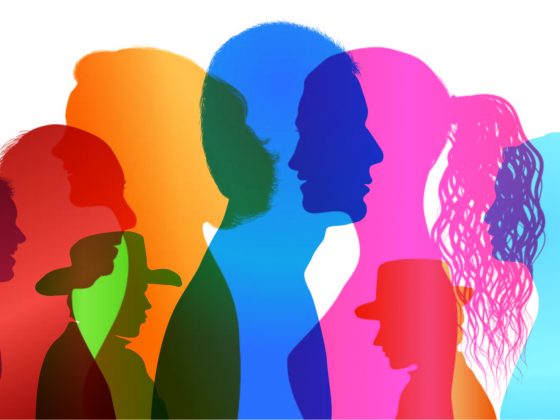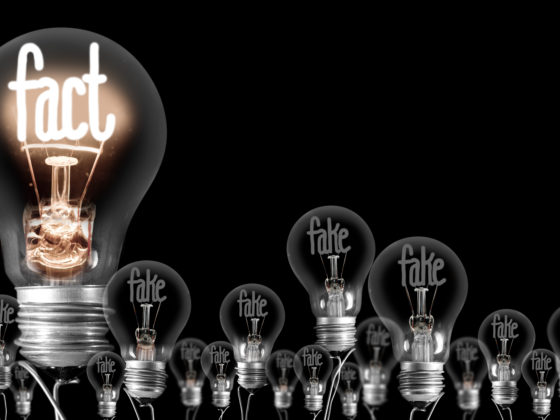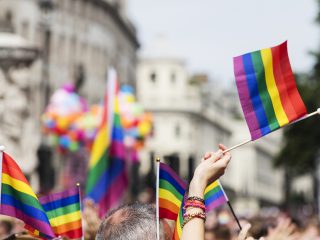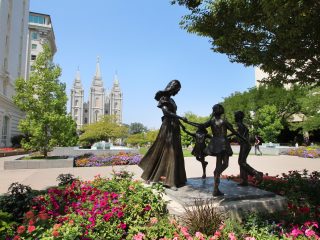Gay identity, and identity more broadly, are misunderstood concepts.
At its most basic level, identity is a part of who you are that you feel is especially important. There are countless identities a person can have, including those based upon a person’s ethnicity, nationality, interests, beliefs, worldviews, occupations, gender, political affiliations, and personalities. Things like Christian, atheist, Democrat, Republican, doctor, bartender, male, female, American, gamer, athlete, emo kid, incel – ad infinitum – can all be important parts of how people see themselves and how they interact with the world. In other words, all of these can be part of a person’s identity.
What makes gay identity different from other identities
But among the wide range of potential identities, gay identity and the identities of other queer people are unique. Like ethnic identity, gay identity is rooted in an essential trait. It’s not something you choose like your religion or your interests.
Unlike ethnic or national identity, it is not a culture you are socialized in. Few people are raised in the gay community and taught from birth what it means to be queer. In fact, most of us were raised in an environment that provided us with a wealth of false and harmful information on the subject.
So what’s the point of a specifically queer or gay identity then? Why do people “define themselves” based upon sexual orientation and gender identity?
Understanding Ourselves
On a personal level, determining your identity is about understanding yourself. Embracing an ethnic identity can teach a person about where they come from, why they were raised the way they were, and why they are treated differently than others by society.
For many trans people, learning about the existence of a trans identity is a watershed moment in their lives. All of the things that have been going on inside of them suddenly have a word that provides a way for them to better understand themselves.
Other sexual and gender minorities have similar experiences. For me, the first inkling of a gay identity came from the application of the word ‘gay’ itself. My initial realization was something to the effect of “that word could be used by someone to refer to me, and they would not be completely wrong.”
That may sound vague and inconsequential, but I remember the exact moment that thought came into my head, including the exact spot I was standing in my high school. I didn’t realize the entire significance of it in the moment, but I definitely knew it was significant. I knew that I had realized something important about myself – that I now understood myself better than I had the previous moment.
Others’ Understanding
The other purpose of identity on the individual level is to help others understand us. If we share a part of our identity with someone, they now have a better idea of what’s going on inside our heads.
Sometimes straight people don’t understand why the “coming out” process is so significant and often so difficult for LGBTQ people, but sharing one’s identity – particularly the parts that are not immediately apparent from the outside – is sharing a deeply personal part of yourself with someone else. The hope is that the person you’re sharing that with will appreciate now knowing you better and will draw closer to you as a result. The fear is that this deeply personal part of yourself will be used against you as an emotional bludgeon.
Identity, Community, and Culture
Embracing an identity also allows us to find others who are like us, have similar experiences and feelings, and can empathize with us. There is no gay community without a gay identity.
Historically, once people discovered their gay identity, they would often be drawn to places they knew they could find their community. Communities sprung up in places like New York City, San Francisco, Los Angeles, etc., and queer people migrated there en masse to find each other.
It was in these places that queer culture as we know it was created. Things like drag shows, gay pride parades, the queer club scene, and the rainbow flag all came from these urban centers of queer community.

These are the places queer people came to to find out how what it meant to be a queer person, as well as how to maneuver in the gay world. What does a gay relationship look like? How does dating work? How are roles in a relationship established? What are the signs and symbols gay people use to identify each other? These are all questions a person does not learn the answer to while growing up in straight society. Instead, these are questions a person can find the answers to once they have adopted a gay identity and found a community.
These enclaves of gay culture are also where the gay rights movement began. There would be no gay rights without gay community, and there would be no gay community without a gay identity.
The process of finding community has changed with technology and with changes in society at large, but the benefits of community have largely stayed the same.
Well what if I don’t want a label?
That’s fine. The purpose of the terms we use is to help us understand and communicate what’s going on inside of us. If none of those terms fit a person, there’s nothing wrong with not accepting any of them.
All of the words are imperfect and imprecise. Of course, a whole lot of the people who refer to themselves as “gay” or “straight” are fully aware that sexuality is a spectrum and that few people are 100% one thing or the other. But that doesn’t mean that the words aren’t useful.
And it’s important to remember that behavior and identity are not the same thing. In the context of sexual healthcare, you’re more likely to hear the term “MSM” than gay or bisexual. It stands for “men who have sex with men,” and it’s used because healthcare professionals are aware that a person’s sexual health risks are not based upon the identity a person uses but their sexual behavior.
The two are often related… but not always. A man might have sex with other men and not consider himself gay or bisexual. And, again, there’s nothing wrong with that.
Yes, sometimes the rejection of the label can be rooted in internalized homophobia or biphobia – “yeah I’m into dudes, but that doesn’t mean I’m one of those disgusting homos” – but sometimes people just feel like the words don’t describe them accurately enough to use them to refer to themselves.
Alphabet soup
The imprecision of the terms also explains why there is such debate over which ones to use and how to use them. Of course, a gay identity is only one of many within the range of sexual and gender minorities. LGBT, LGBTQ, LGBTQIA+, LGBTQ2SIA+, or the simpler but also problematic term ‘queer’ are all used in similar, more inclusive ways. Jokes about the alphabet soup of identities aren’t wrong, but that doesn’t mean we should throw them all out. (Personally, I prefer ‘queer’ as an umbrella term, but I understand why that rubs a lot of people the wrong way.)
The alphabet soup exists because people want to find more and more accurate ways of communicating to other people what’s going on inside of themselves.
For example, some people decided that “bisexuality” didn’t really describe how they approach relationships and attraction because they don’t feel that gender factors in for them and because “bisexuality” implicitly excludes anyone outside the strict gender binary. So they came up with the term “pansexuality” to more clearly express themselves. Great! Now we’ve taken one more step in being able to understand other humans.
People mock the alphabet soup, but at the end of the day it is fundamentally about communicating with each other and understanding each other. What’s wrong with that?
The Real World
Identity is not some ego-centric exercise in exploring our own snowflake-ness. It has real-world ramifications that impact how we interact with the world and each other.
After all, our identities lead to communities, cultures, and political movements. How much more ‘real-world’ can you get?




